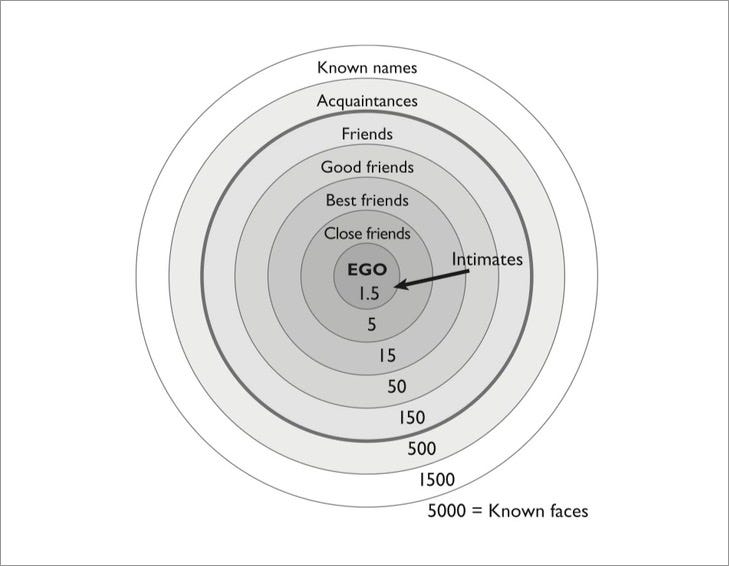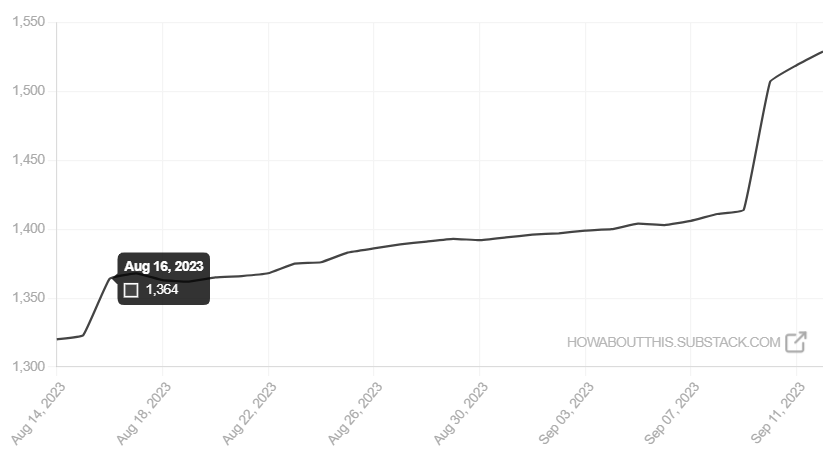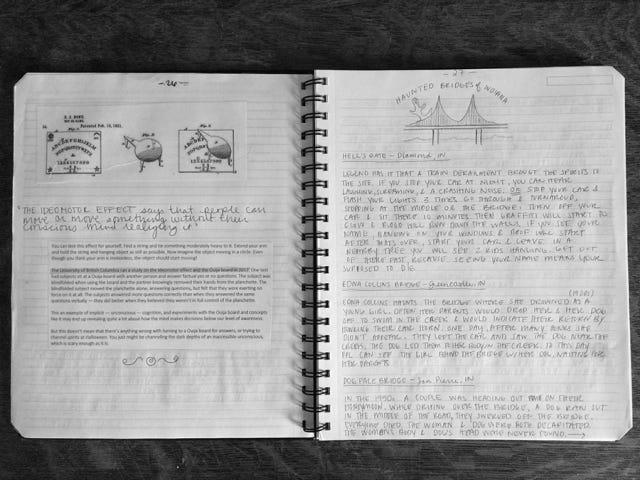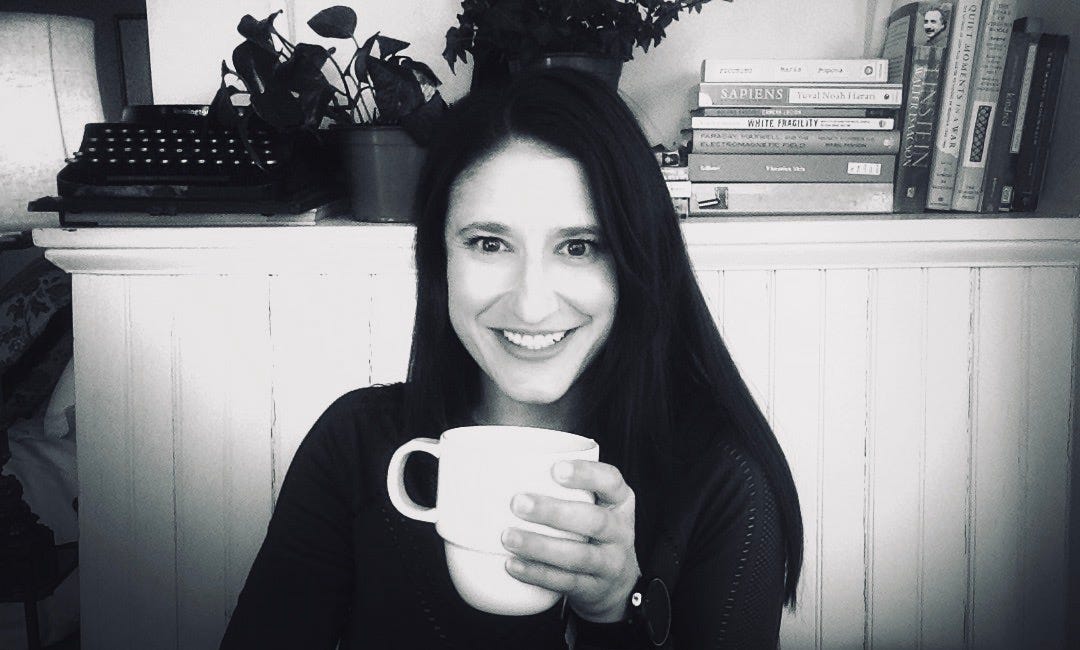Dunbar's number(s), Substack Recommendations and swell, like-minded people
Thinking about the implications of Dunbar's theories of social networks and a real life example of writers supporting each other
Most newsletter writers want to know how to get more readers and build their audience.
(those who say they don’t care about this might not be thinking things through but everyone has their goals that are important to them at a point in time)
To be clear, the most important job of a newsletter writer is to create and publish the best possible stories, articles, essays, reports, analyses and resources and to keep improving. Without this objective you’re ultimately going to fail. But there’s a very important second job (or need, perhaps) which I’ll discuss below.
Special note: this newsletter may be truncated by email apps like Gmail due to its size so check for links to allow you read the full email. Also, this is a bit of a lengthy dive into some Substack mechanics, so it may (or may not) interest you - but I do hope you’ll check it out.
Many writers (I’ll just use the general term writers for the rest of this post) send their thoughts into the universe with the hopes of getting some kind of reaction. Some writers are happy to just keep writing and feedback from their readers isn’t very important to them. Other writers would like a little bit of acknowledgement and feedback from readers. Many of us, however, want to reach as many people as we can with our work: having thousands (or millions) of readers is a conscious (or unconscious) goal for many writers. Growing your audience can be a slow, difficult and discouraging process, especially for writers (of any stripe) who want to make their writing their primary source of income, but it’s necessary because readers are a pre-requisite to income. Thus, for many newsletter writers, growing their audience ranks a close second in their list of priorities.
In my experience, almost all writers need to engage with readers, other writers, and to build their audience and get recognition. That doesn’t mean that a writer needs to (or should) engage with every single reader or Internet rando that reads their work. But clearly there are huge advantages to building relationships and using the power of social networks to help raise awareness about your writing.
A few weeks ago we explored the concept of Dunbar’s number, or rather numbers. We’ll look at one example from my own experience where we can apply this concept.
“There is only one thing in life worse than being talked about, and that is not being talked about.” - Oscar Wilde
As discussed last time, Dunbar’s number(s) represents the groupings of people you know in terms of the closeness or strength of the relationship that circle or layer represents. Your relationships with people can vary in strength from faces you recognize and names you know all the way to the closest, most intimate relationships that you have in your life. This collection of people in your orbit (and you are most certainly in some of their orbits, too) looks something like this:

Let’s also recall that Dunbar’s numbers are extrapolations based on observations of the relationships of non-human primates and values were calculated in the context of human relationships. One key point to consider is that non-human primates do not understand modern technology and have no way to interact with each other (on their own) without personal contact or the ability to see or hear one another.
Humans can do things differently.

Digital tools like social media have greatly expanded our ability to recognize and interact with other people, as did television, movies, newspapers and magazines before them. Over the centuries we have gotten better at creating artificial likenesses of ourselves that can be shared with other people thousands of miles away.
One of the things that I still love about social media - despite its flaws - is that I can form a kind of weak bond (something less than a typical friendship but still with some strength to it) with many people scattered all over the world thanks to social media apps. For me it used to be Twitter and Facebook that provided those connections. At one point I had over 4000 followers on Twitter and several hundred followers on other platforms. Now I’m more likely to be using Instagram Threads, Substack Notes and Bluesky, maybe even LinkedIn, to have these kind of weak bonds, plus I can keep tabs with people I do know in real life (I still maintain a Facebook account to keep in touch with some friends and family).
Social media has put me in touch with experts, the odd celebrity, writers, musicians and more, people who I would never have had the opportunity to meet in person. Social media of some sort has likely put me into contact with you, dear reader, at least indirectly.
[I know many of us have had bad encounters while using social media, leading to trauma and tragedy. I am sorry about this. If this topic is upsetting to you, I’ll understand if you choose to stop reading. I’m going to continue to focus on the hopefully positive aspects of social media.]
You could argue that social media adds at least one more circle (or circles) to the Dunbar diagram: the people that you encounter primarily online. Or maybe you could have a completely separate set of circles just for online contact. Or, also a possibility, your social media contacts would just take up space within your own set of concentric circles of friendships.
Regardless of which model you think is most accurate, social media and online interaction can add to the number of people who at least recognize your name or face, and vice versa. It can be a curse but also a blessing.
So here’s the thing: Dunbar’s model illustrates the point that we are surrounded by circles of people. Each of us has a set of friendship circles around us. Sometimes our circles overlap based on the relationships we have with each other and the people we know. The “six degrees of separation” meme, which was not really an extensive, scientifically controlled study, does suggest a truth: eventually, by varying connections and degrees, virtually every person on earth can find a connection to every other person, either through biology or by relationships, even if it takes a chain of hundreds or thousands of people to connect you to another person. But often a shared interest can lead to productive collaboration and I want to share an example from my own Substack experience about this.
Noted and finding people with similar interests
First, let me share some background information. I don’t have the huge newsletter audience of other writers so my example is small and specific and hopefully a few details will be useful.
Here’s a snapshot of my current subscriber count (free and paid) as of September 12, 2023:
Prior to the weekend of Sept. 9 and 10 this number stood at 1,414. Then on the 10th this happened:
Similar growth events have happened with
before. To understand this, I’m going to write a few words about one of the finest newsletter writers on Substack, . Jillian holds a PhD and is a professor of English who is an authority on commonplace books and how people have tracked information and their thoughts in writing during the past few centuries.I wrote about my own love of notebooks, including commonplace books, in 2022:
To be honest, I’m not 100% certain when it happened last year but somehow I discovered Jillian’s newsletter Noted. I was delighted to see someone else who shared and interest in this somewhat archaic (but powerful, don’t get me wrong) practice of saving information by handwriting on paper. We connected through the comments section of her newsletter and have over time developed some correspondence over the subject matter we both find interesting.
[Interestingly enough, Jillian linked to my commonplace books post exactly one year ago today (on Sept. 12, 2022)]
We have interviewed each other in our newsletters:
We’ve never met in person but at the very least I consider Jillian to be a friendly acquaintance (going back to Dunbar’s theories for a moment) and a kind of newsletter “colleague” although clearly Jillian’s newsletter success is increasing on an accelerated track (and deservedly so) and I’m not quite in the same league. This lady provides some of the best content on Substack and if you haven’t already subscribed to Noted you really need to, by the way.
Now I want to talk about Substack’s network effects for a moment as an example of how connecting with thoughtful, talented and like-minded people can lead to some unexpected results. Noted and How About This have both recommended each other:
Jillian’s recommendation of How About This:
My recommendation of Noted:
I was happy to recommend Noted and to receive her recommendation of HAT.
In fact, I am deeply indebted to Jillian’s recommendation, as you will see below:
More than 40% of my subscriptions to date are the result of Jillian’s Recommendation. The number of subscriptions that I have received via Noted is about twice the number of subscriptions I’ve received from all other newsletters… combined! And, not incidentally, I am grateful for every Substack Recommendation!
Noted has received several powerful links and recommendations. It’s been featured at least twice in Substack Reads, it’s been linked to at least twice by
and on Sept. 10th Noted was recommended by , another Substack newsletter with a lot of reach. Through Substack’s Recommendations feature, when Jillian gets a load of new subscribers, some of them will sign up for the newsletters that she has recommended, includingTo be blunt, I never anticipated how connecting with another Substack writer would boost my own subscriber count so much. But this intersection of my set of concentric circles and Jillian’s (back to Dunbar once again) is a powerful demonstration of the power of networking.
But there’s a sobering side to this kind of growth, one worth considering. If someone recommends you, however they do it, they have essentially made a small investment in you. And if you have an ounce of conscientiousness in your soul, you want to remain deserving of this kind of recommendation. So it makes you want to stay on top of your game and keep putting our your best work: you don’t want to let your supporters down, after all.
And, once again, thank you so much, Jillian, for being an inspiration, a role model and a generally swell and generous person.
Other examples of Substackers networking and supporting each other
After that deep dive, I wanted to focus on some other examples of writers supporting each other to mutual benefit:
and his Social Club is a group of dozens, if not hundreds, of talented and smart creative people who regularly publish amazing work and support each other’s creations. I’ve been a member of the STSC for about a year and while I’m not very active there I still appreciate the power of this group.The trio of
and can be seen bantering in Substack Notes and collaborating on various writing projects.Speaking of bantering…
and keep taking it to a new level in Substack Notes as well…The ongoing collaborations between
and remain delightful.Members of the Substack fiction writing community collaborating, like
andAnd finally, I want to recognize three other writers that I connected with early on and that you really need to check out:
andJust imagine us all together, each of us surrounded by our Dunbar’s circles of the people we know: the possibilities are endless for reaching out to the world. And I’ve just given you one simple example.
Something to think about.
Afterword
This post has been a real struggle for me to write and publish, due to the intersection of some real life challenges plus trying to wrap my head on how to follow up on my Dunbar’s number(s) post. At one point I had the idea to make some kind of evergreen Substack resource that people could use and grow their audiences. The reality is that there’s tons of variables that influence audience growth, plus I don’t have the numbers to compare with the success of writers like
and others. So I did what I could: share my own experience. I hope it’s been useful.You might want to check out
by , though: he’s put a lot of thought into building subscribers and an audience and he has created a number of guides that are worth checking out including this one:














Thanks for the mention, Mark. Anticipatory Plagiarism is one of the favorite concepts of the Oulipo movement, always mentioned with a wry smile. There are lots of examples of it The Penguin Book of Oulipo, which I reviewed, such as the Psalms (acrostics) and Gulliver's Travels (automated writing)😉
Great post Mark. It’s a great way to think of it.
I’ve been thinking recently about how I allocate recommendations.
I want to use them to help newer/smaller subtacks than me with a leg up. I also want to give my readers access to new substacks that I’ve discovered.
Then maybe there are recommendations of people you’ve “grown up with” on Substack who will just always be there. The class of 22 maybe!
So I think there are different categories of recommendation maybe.
I might get round to formalising these thoughts a bit more in a post soon.
Thanks again.